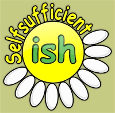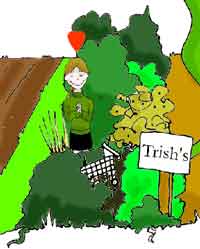
“Now every field is clothed with grass, and every tree with leaves; now the woods put forth their blossoms, and the year assumes its gay attire.” – Virgil
May certainly feels like the time when England has put its party clothes on with so many tree and plants in blossom. I think that May feels like that excitement before a party, the weather is hotting up, it is almost summer and all the all the expectations of what the next two seasons can bring are laid before us in a truly beautiful floral display. To explore for yourself and find some food for free why not join us on a forage?
Elderflower Sambucus nigra L
I can’t really write about May wild food and foraging without mentioning elderflower and more to the point elderflower cordial and Champagne There is not much Elderflower around at the start of the May but by the end it’s floral scent can be smelt from hedgerow to parkland and heath to allotment down here in the South of England. The season varies slightly across the country and I have seen elderflower growing as late as July in Edinburgh. More about elderflower…
- Habitat: Waste ground, out of walls, parks.
- Parts used: the flowers (later in the year the berries)
Hawthorn Blossom Crataegus monogyna L
Hawthorn Blossom is known as the symbol of good hope in the language of flowers and the Romans used it as a charm against sorcery placing the leaves on the cradles of new-born infants. It is easy to see why such mythology surrounds hawthorn blossom as it adorns hedgerows up and down the country signifying a real return to warmer weather after the cold winter and early spring months. The blossoms can be picked and look good in a salad, they also make a great tea. Herbalists use hawthorn to treat heart and circulatory problems and traditionally it would be served as a tea.
- Habitat: Parks, edge of old fields, my allotment, the edge of public rights of way.
- Parts used: the young leaves can be used in place of parsley, blossom in tea and later the haw berries can be eaten raw or in jams. *avoiding the pips which contain cyanide!
Herb Robert Geranium robertianum L
If hawthorn blossom heralds the start of summer then herb Robert heralds the start of the weeding season. It seems to pop up all over the place at this time of year. It’s a spreading annual or biennial that grows to about 50cm, its pink/purple flowers often form in pairs and have 5 petals and are about 1cm in diameter. Herb Robert is thought to repel rabbits, support the immune system and has a digestive, sedative, antioxidant actions. It is odd that Herb Robert rarely gets a mention in modern western herbalism and it is certainly worthy of further research.
- Habitat: As a weed in containers, wasteland, woods, clearings, walls and cracks in pavements.
- Parts used: All but the root.
Alexanders Smyrnium olusatrum L
Grows to about 1.5m tall and has really deep green, three lobed, leaves and yellowy green flowers. Alexanders have a very strong agreeable flavour, I have put them in a glass of water to keep them fresh then drank the water. I had accidentally made a very tasty drink. You can also steam Alexanders and serve with melted butter or add them to a stew. Think celery in a recipe.
There is a warning with Alexanders, it might look pretty different than most other plants to the experienced forager, but to the novice there are many poisonous look alikes that will kill you. Be 110% sure that you know what you are picking.
- Habitat: Hedges, riversides, roadsides and near the sea
- Parts used: The stems and the leaves.



Hi, I was wondering around looking for some new spring plants and found your page. Very nice and clearly written. I was interested in what you said about Hawthorn, as I have a hedgerow full of them. I read your information then had a look at GreenDean, cause it is always safest to have another reference. I wanted to put the link here, because you recommend eating the flowers and berries, which are both toxic and to children can be deadly. Please be very careful with the information that you have here and realize that everyone can read this, novice’s and weather worn foragers.
http://www.eattheweeds.com/www.EatTheWeeds.Com/EatTheWeeds.com/Entries/1944/4/20_Entry_1.html
Elderflower Sambucus nigra L: also contain cyanide, the leaves, stems, fruit(seeds) which can cause severe vomiting.
Much success and many blessings.
Hello Casey and thanks for commenting.
Yes always good to have another reference that is true and I eat the weeds is a good site that I use myself, so no harm in posting it.
I do concur that you should not eat the seeds of hawthorn and I should (and will) make that clearer. However, the blossom is not poisonous.
The seeds are not poisonous unless you bite into them, this releases chemicals that react with each other to make the poison. The poision is cyanide and this is present in cherry pips, almonds and apple seed as do elderberries pips – Sambucus nigra as you state.
ANDY, YOU MENTIONED IN ONE OF YOUR POSTS THAT TO BEAT THE DROUGHT IN ENGLAND YOU WERE THINKING OF MOVING TO SCOTLAND, TAKE MY ADVICE AND STAY IN ENGLAND AS YOU WILL NOT GET AN ALLOTMENT IN SCOTLAND ESPECIALLY IF YOU MOVE TO ARGYLL AND BUTE AREA AS THERE IS NONE. THIS IS THE LARGEST LAND AREA IN SCOTLAND AND IT ONLY HAS TWO ALLOTMENT SITES, ONE IN HELENBURGH WHICH IS THE SIZE OF MY FRONT GARDEN AND THE OTHER OVER IN THE ISLE OF BUTE WHICH IS NOT MUCH BIGGER THAN MY GARDEN.
I MOVED HERE 7 YEARS AGO WITH THE HOPE OF CONTINUING WITH MY ALLOTMENT PASSION ONLY TO FIND THAT DUNOON DOES NOT HAVE ANY ALLOTMENTS AND THE COUNCIL AND COUNCILLORS ARE NOT INTERESTED IN GIVING LAND TO THIS INTEREST FOR THE LOCAL RESIDENTS AS THEY WOULD SOONER SELL ANY LAND TO A DEVELOPER FOR A LOT MORE MONEY THAN ALLOTMENTS COULD BRING IN.